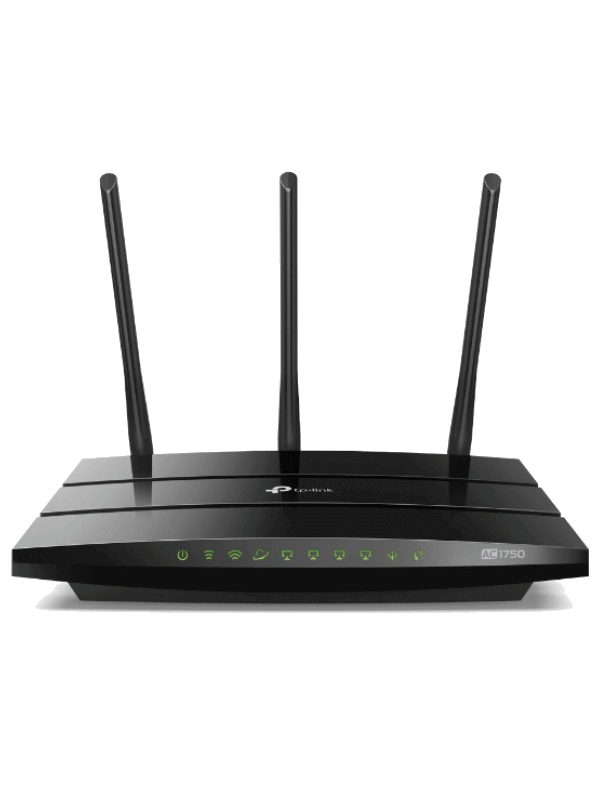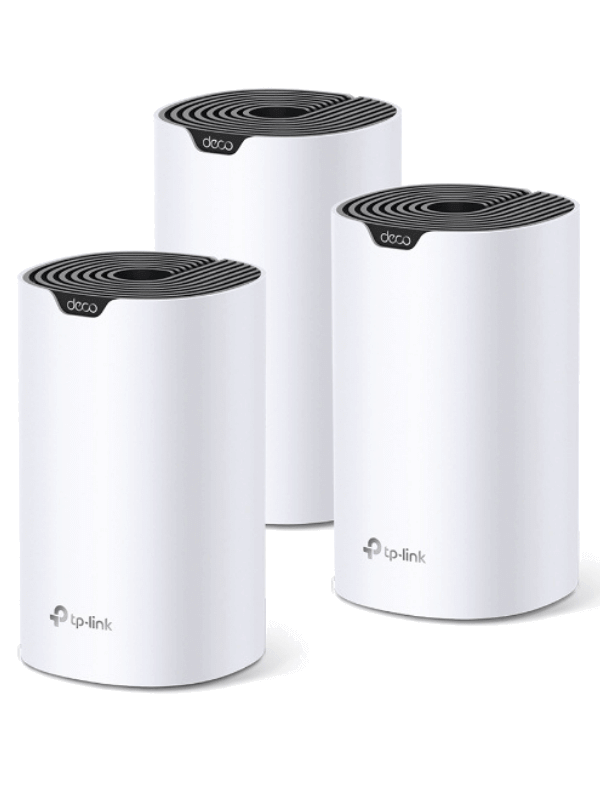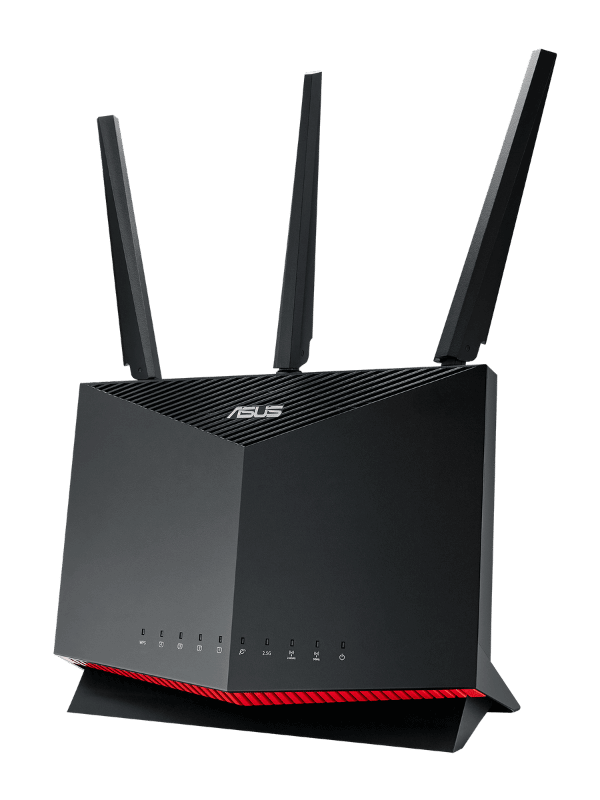Here is our review of TP-Link Archer A7.
As a Network Engineer, I have bought a bunch of routers and tested them against each other.
And one of these routers was the TP-Link Archer A7 – which proved itself to be the best of the low-priced routers.
From a 5 feet distance, the router managed to reach a staggering speed of 438.39 Mbps. Beating similarly priced routers by miles.
Below I will discuss my findings during testing in more detail.
So keep reading.
TP-Link Archer A7 AC1750 Overview
![TP-Link Archer A7 Review [AC1750] in 2024 1 Tp-Link-Archer-A7-Overview](https://networkshardware.com/wp-content/uploads/2021/08/Tp-Link-Archer-A7-Overview-1024x512.png)
Announced on June 11, 2013, the TP-Link Archer A7 is an older Wi-Fi 5 router. [1]
The router is a cheaper option that provides your home with a Wi-Fi signal using a 2.4GHz network and a 5GHz network.
Despite being an older model, the Archer A7 is one of the best budget routers out there. During testing, it beat every other similar-priced router I tested by miles.
Furthermore, it also has an easy setup and some decent features.
I recommend the router to anyone with an internet plan of about 200-300 Mbps that wants to save some money.
But if you have a faster internet plan or/and are looking for more advanced features. Then this router might not be the one for you.
Check out the alternatives later in the article for some other options.
TP-Link Archer A7 Specs
- Wi-Fi Standard: 802.11ac (Wi-Fi 5)
- Bands: Dual Band
- Ports: 4 x 1G LAN & 1 x 2.0 USB.
- Highest Measured Speed: 438.39 Mbps
- Range: 85 feet (~26 m)
- Size: 1.4- by 9.5- by 6.0-inches (243×160×32.5mm)
- QoS: Yes, but not advanced
- Parental Controls: Yes
- Guest Networks: Yes
Performance
As already mentioned, the Archer A7 AC1750 is one of the fastest budget routers I have tested. With a max speed of 438.39 Mbps with the 5GHz band in from 5 feet range.
Beating the similar priced Linksys EA7300, which reached 299.08 Mbps from the same range. And the slightly costlier Netgear R7000 that only reached 254.63 Mbps.
Overall the Archer A7 5GHz band performed very well. With a speed of 123.53 Mbps from 25 feet and 57.31 Mbps from 50 feet.
Better than the Linksys EA7300, which reached 71.1 Mbps from 75 feet and 48.52 Mbps from 50 feet. With a much weaker signal.
![TP-Link Archer A7 Review [AC1750] in 2024 2 5GHz Troughput](https://networkshardware.com/wp-content/uploads/2021/08/5GHz-Troughput.png)
The 2.4GHz band on the Archer A7 is good. But it’s not what differentiates the Archer A7 from other similar options.
From 50 feet, it reached 49.61 Mbps. Slightly slower than the Netgear R7000, which reached 50.84 Mbps.
It did, however, beat the R7000 on 75 feet distance. Getting an average speed of 14.9 Mbps compared to the Netgear R7000, which reached 13.65 Mbps.
![TP-Link Archer A7 Review [AC1750] in 2024 3 2.4GHz Throughput](https://networkshardware.com/wp-content/uploads/2021/08/2.4GHz-Throughput.png)
Overall the performance of the Archer A7 is enough for any internet plan up to 300 Mbps.
You can still get it with a faster internet plan. But then you will not get the speed you are paying for in many places in your home.
My recommendation for you with a faster internet plan that is on a budget is the TP-Link AX50.
![TP-Link Archer A7 Review [AC1750] in 2024 4 All routers max speed - Tested by networkshardware.com TP-Link Archer A7](https://networkshardware.com/wp-content/uploads/2022/06/All-routers-max-speed-Tested-by-networkshardware.com-TP-Link-Archer-A7-783x1024.png)
Design & Ports
The Archer A7 is a small glossy-black router measuring 1.4- by 9.5- by 6.0-inches (243×160×32.5mm).
It has four 1G LAN ports and one WAN port. The LAN ports are what enable other devices to get a wired internet connection from the router.
The WAN port is what you connect to your modem or ONT. Here is where the internet comes into the router.
Furthermore, the Archer A7 also has one 2.0 USB port. The USB port enables you to connect a printer or external hard drive for sharing on the network. [2]
Moreover, the A7 has an On/Off switch, Reset switch, a Wi-Fi On/Off switch, and one USB active light.
![TP-Link Archer A7 Review [AC1750] in 2024 5 Tp Link Archer A7 Back edited](https://networkshardware.com/wp-content/uploads/2021/08/Tp-Link-Archer-A7-Back-edited.jpg)
From the front, you see nine lights. One is for the power, two for each band, four for all the ethernet ports, one for the WAN port, and the last for WPS activity.
Overall the design is very standard. My only annoyance is how easy it was to scratch. Within 10 minutes of usage, I had already managed to scratch it in multiple places.
Maybe it was me who was a bit clumsy. But still, I don’t think it should scratch that easily.
Firmware Features
The TP-Link Archer A7 uses the Tether app, which is the TP-Links app for routers. From there, you can settings and turn on and off features on the router.
One such feature is parental controls. It allows you to create users for your kids that stop them from accessing certain domains or topics of your choice.
It also enables you to set the time they get to be on the internet.
![TP-Link Archer A7 Review [AC1750] in 2024 6 Parantal Controls](https://networkshardware.com/wp-content/uploads/2021/08/Parantal-Controls-1024x885.png)
Another feature of the Archer A7 is the QoS. It enables you to prioritize devices in your network.
Though, I did find this feature very underwhelming. Since it only allows capping the bandwidth of devices.
I expected something akin to what the TP-Link AX6000 offers. That makes it possible to prioritize a type of activity on the network. Such as for streaming or gaming.
![TP-Link Archer A7 Review [AC1750] in 2024 7 QoS](https://networkshardware.com/wp-content/uploads/2021/08/QoS-1024x885.png)
The Archer A7 can also create a guest network. It enables guests to connect to your internet without having access to any other devices in your home network.
![TP-Link Archer A7 Review [AC1750] in 2024 8 Guest Networks](https://networkshardware.com/wp-content/uploads/2021/08/Guest-Networks-1024x885.png)
From a security standpoint, the Archer A7 is decent. Being protected by Trend MICRO, a cybersecurity company with an excellent reputation. [3]
You have multiple protection types you can turn on and off. I recommend having it all turned on at all times.
The risk with the Archer A7 is that since it’s an older model, it might not receive many new updates patching security flaws.
So if security is a big concern for you, I would recommend a newer router.
Coverage
From a range perspective, I found that the TP-Link Archer A7 performed quite average. With its Wi-Fi reaching about 80-90 feet (~25-27 m).
Such a range will be enough for a small or medium-sized home.
Even though, I need to mention that the range is hard to calculate and will vary from home to home.
The reason for this is that many things impact the range. Some examples are the router’s position, surroundings, and signal interferences.
I recommend a mesh system instead if you know yourself to have a larger home with many dead spots.
A good one I reviewed is the TP-Link Deca M4.
Setup & Warranty
The setup process for the Archer A7 was easy. I used the TP-Link app Tether. Which found the router fast when I connect to the Wi-Fi network.
Consequently, I followed the steps on the phone, and then I was done.
![TP-Link Archer A7 Review [AC1750] in 2024 9 Setup of the TP-Link Archer A7](https://networkshardware.com/wp-content/uploads/2021/08/Setup-of-the-TP-Link-Archer-A7-1-1024x554.png)
![TP-Link Archer A7 Review [AC1750] in 2024 10 Setup of the TP-Link Archer A7](https://networkshardware.com/wp-content/uploads/2021/08/Setup-of-the-TP-Link-Archer-A7-2-1024x554.png)
You can also set up the router using your computer. Which you do by either connecting the computer with an ethernet cable or to the Wi-Fi.
The Wi-Fi password will be at the bottom of the router. Then, type in tplinkwifi.net in your browser and follow the instruction.
The Archer A7 has a warranty of one year.
One year is okay, but not as long as many others. But since it’s a cheaper router, it’s somewhat expected.
TP-Link Archer A7 AC1750 Reviews
With over 52 000 reviews on Amazon, the TP-Link Archer A7 has a very good rating considering that this is a budget router.
The most significant problem people are having is the same as with most other routers, defective units.
Luckily the one-year warranty covers this. But it is nevertheless very annoying if it happens.
But looking at the reviews, I would say that the router has fewer defects than most other routers.
Alternatives to TP-Link Archer A7
![TP-Link Archer A7 Review [AC1750] in 2024 11 Alternatives images](https://networkshardware.com/wp-content/uploads/2021/08/Alternatives-images-1024x768.jpg)
Even though the Archer A7 is a good router, some other options might fit you better.





3 thoughts on “TP-Link Archer A7 Review [AC1750] in 2024”
I have been using the Tp-link a7 for years and then bought the ax50 and have been using it for the last 2yrs. My son-in-law and daughter bought me the Asus rt ax88u for Christmas f 2021. I have since gone thru 3 units. 2 of which kept dropping the net signals from the modem and one just plainly burnt up and died. However, this case is not a dig against any Asus unit as I have used and deployed at least a hundred out to customers in the past. I am still using my TP-Link ax50 as a reliable and proven unit. With my T-Mobile 5g home network, I’m getting anywhere from 60mbps to around 110mbps at 30ft. While it is inside my closet and feeds my network hub, powered up with my app 1500 watt sinewave battery backup. The home is about 2100sq/ft. And when I added an entity extender for the back of the house I am getting an average speed of 50-60mbps. Just an FYI.
Ps. T-Mobile home network is an average of 45-50 Mbps down and 9-17mbps upload.
Thanks for letting us know, Kevin.
I just bought one of these. Works great.
Got 453 mbps
It says Two Year Warranty on the box.